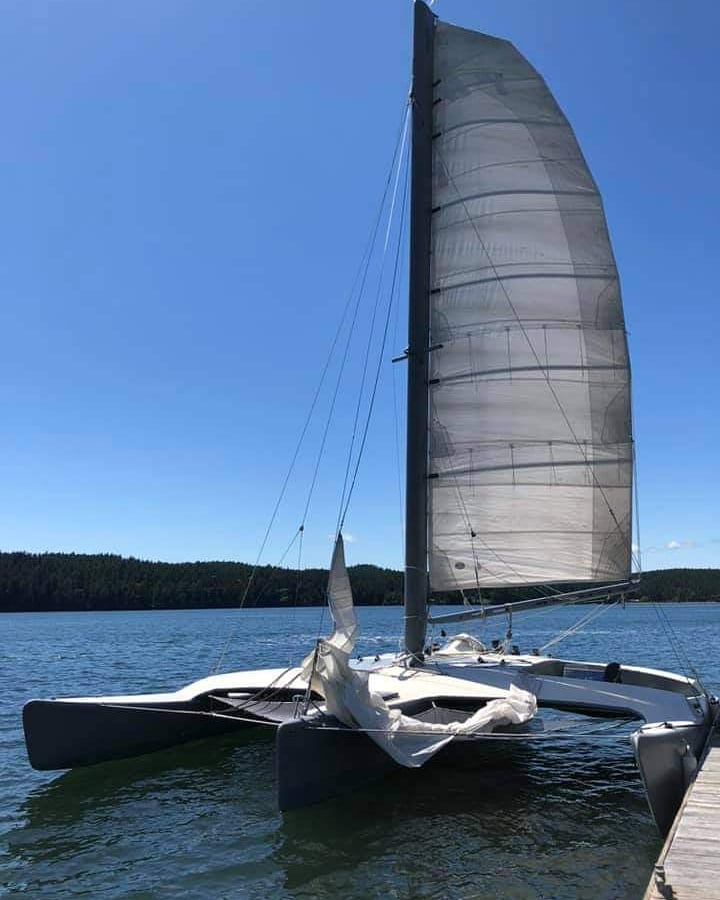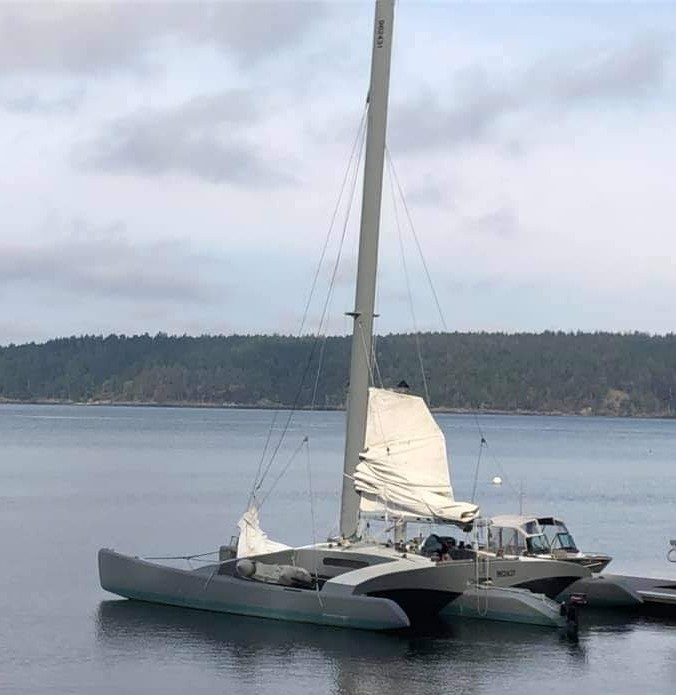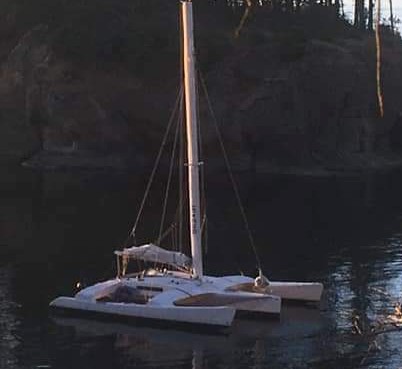This 37′ trimaran is one of my earliest. It was completely before CADD.



This 37′ trimaran is one of my earliest. It was completely before CADD.



I can’t believe that I have been lured into designing a new millennium searunner. A custom design where the design requirements eventually became center cockpit over any others. I, and most other designers, rejected center cockpit as it takes up the biggest part of an already too skinny main hull. Ply/epoxy. For the wooden boat festival.
Added more items, lowered the boom, photovoltaic, and added people. And the in position. Customer has been friend for 30 years. I have not even thought about plans. Just enough for his wooden boat festival presentation. I just noticed that the seastays vanished in this Luxology rendering method. They are there.
Plywood flat panel construction main with core as needed. Amas in CM developed plywood. Amas and tubes slide in for mooring in a marina.
John launched his heavily modified KHSD 40 trimaran June 20thWhat is it, 46′ now?
I did carbon wing mast and boom designs for it also. Will post in the future.
#trimaran #multihulldesigns

I was shown this 52 Mcconaghy trimaran with an interesting hound arrangement. Composite rigging guru John Fanta advises against any hidden composite rigging arrangements.
It also had an oddly large masthead plate and an oddly small and badly chewed up exit for something there in the picture foreground.
I was just about to splash the 12 foot tri when I got a call from Lloyd Fogg, one of my builders who was at Shilshoe Marina that evening.
They just got sails that day and were going north with the tide in the morning. One of my 32 foot cruising trimarans.
Could I check everything out? Sure.
A few revisions, but it sails great. Fully instrumented. We were faster than true many times.
Great evening.
Wi-Fi down in office building last Thursday and Friday. Owner gone and his voice mailbox full.
Verizon modem no longer working, probably since last unavoidable win 10 update. Clearly the universe was telling me to go sailing. Little 12 foot tri. Rudder seems to be a 6% or so 6000 series foil; probably from a Hobie. Would be very easy to stall. I was worried about maneuvering. Nah. Did great. I will change lots of the sail handling things, but I am fussy about sail trim.
Delightful to sail. “Does everything it’s supposed to” noted Tim Ryan, also trying it today.
Facebook is great for reminding me of things I would forget. I forgot this from two years ago. 23′ mini cruiser built in CM.
I just got this wonderful note from a builder, Joe. I got to sail on his boat in Lake Tahoe back the same week Sierra Cloud had her first sail.
“The little tri is 26 years old now. Yes I know it is hard to believe.
I don’t baby this boat. It is kept on a lee shore and mostly sailed in
strong winds. She doesn’t look much different than the day I launched it and shows little signs of wear in all key areas.
I guess at this point we could say the construction is sound.
I’m glad I didn’t go with a “famous designer” with all that I hear
about those boats. Thanks for the great design. She has given me many years of good times.”